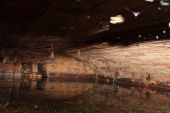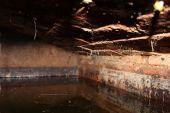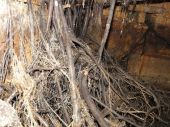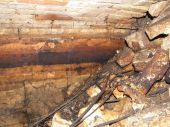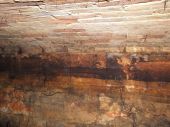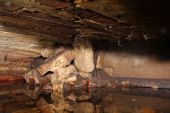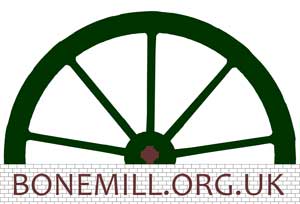The cistern is a brick built underground reservoir the size of a small room, with a curved top and hatch. The top was covered in earth and only the hatch was originally visible. The soil over the roof was removed to reveal the arched top and some of the brick walls.
When we first looked inside, the cistern was flooded almost to the roof, and had tree roots and debris in it. Water was pumped out and the roots cut away to reveal a large space with two inlet/outlets on the upstream side which line up with channels in the ground, and one on the downstream side which lines up with the covered trench where the fertilizer was found. There is a partial collapse on the downstream side but loose debris has been removed.
The cistern hatch shows there are two courses of bricks forming the curved top, and it has an iron plate along one edge of the hatch. The cistern has now filled up again with rainwater, we think this will keep it preserved better so we will leave water in it.
The cistern’s purpose is believed to be for supplying a steam engine. See the Chimney article for an explanation of this theory. A water supply would also have been needed for the bone boiling process used to clean the bones before grinding.
We now keep the cistern fenced off to prevent visitors walking on the curved roof which could cause it to collapse, or falling in through the hatch at open days. The hatch is normally kept covered with a wooden pallet to prevent wildlife falling into the water, its only uncovered at open days.






